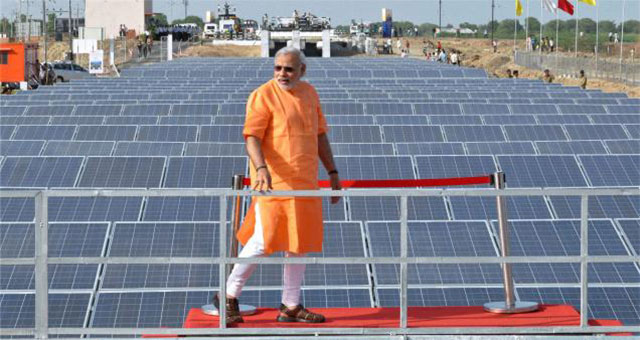Financing the Indian Solar Industry
Apart from the pathetic state of the country’s distribution utilities which are saddled with billions of dollars in debt, financing of the capex heavy solar farms is the biggest obstacle facing India’s target of 100 GW by 2022. The government has recognized this issue and is working innovatively to lower the capital costs of solar projects by working with banks, lenders and IFCs like WB, ADB and KFW. They are also looking to expand the equity capital availability by luring in cash rich entities like Softbank. Here are some innovative things that the government has done to lower the cost of capital for projects
- Ask NTPC and PTC to float tenders for solar energy development with tariffs linked to the dollar – The hedging costs of dollar loans is extremely high at 5-7%, which means that Indian developers cannot utilize the super low interest rates of ECBs as the high hedging cost negatives the advantage of low interest rate. The government is planning to do a pilot whereby a 500-2000 MW tender will be floated with tariffs lined to the dollar. This means that the tariff will increase if the dollar appreciates. This will mean that the companies will not have to hedge brining their capital cost down by 5-7% per year and reducing the solar tariffs to below Rs 5/kWh from around Rs 6.5 now. The only problem is that who will be on the hook for the dollar risk. I don’t think NTPC or PTC will take on the risk. It will be the government which will be taking on the risk. While the government’s hedging costs might be lower than for private entities, I am not sure whether these delta will be a huge game changer. Ultimately the government will pay higher effective tariffs for solar energy, as the hedging cost is factored in.
- IREDA to give low interest 10% loan for rooftop solar projects – The government wants 40 GW out of the 100 GW solar target to be fulfilled by rooftop solar projects. However it has not done much to help the cause. The first real support has come out with the announcement that India’s renewable energy funding agency IREDA will give low interest loans of around 10% interest rate for rooftop projects of at least 1 MW size (aggregate). This will help boost investments as the India interest rate is around 12-14% for corporate loans. Not a big change, but will still help give the sector a boost
- Plans to use the $3 billion National Clean Energy Fund (NCEF) to subsidize solar loans – India has created a massive $3 billion NCEF fund by levying a Rs 200 /ton levy on coal extraction. This has been ongoing for the last 2-3 years, but the funds have not been utilized to help the environment in any meaningful way. The government plans to subsidize loans give to renewable energy using the funds from NCEF as per a draft prepared by a committee.
- Priority Sector for small solar loans – The government has made lending to small solar projects a priority sector for its banking systems which will increase the flow of funds for the sector. Note the overall sectoral lending limits for the overall power sector has been hit, which had constrained the flow of funds for renewable energy. This will increase the financing for small project developers.
Besides the above, some large government backed power financing companies such as REC, PFC etc. are changing their norms and procedures to make it easier for renewable energy companies to take up loans from these institutions.
Google+


